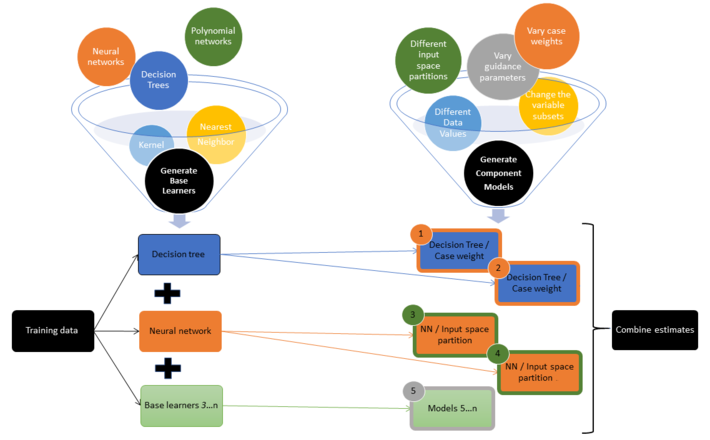Ensemble methods take several machine learning techniques and combine them into one predictive model. It is a two step process:
- Generate the Base Learners: Choose any combination of base learners, based on accuracy and diversity. Each base learner can produce more than one predictive model, if you change variables such as case weights, guidance parameters, or input space partitions.
- Combine Estimates from the Base Learners. The result is a computational “average” of sorts (which is much more complex than the regular arithmetic average).

Click on picture to zoom in
References
- Lior, R. (2019). Ensemble Learning: Pattern Classification Using Ensemble Methods (Second Edition). World Scientific.
- Seni, G. & Elder, J. (2010). Ensemble Methods in Data Mining: Improving Accuracy Through Combining Predictions. Morgan & Claypool Publishers.
DSC Resources
- Free Book and Resources for DSC Members
- New Perspectives on Statistical Distributions and Deep Learning
- Time series, Growth Modeling and Data Science Wizardy
- Statistical Concepts Explained in Simple English
- Machine Learning Concepts Explained in One Picture
- Comprehensive Repository of Data Science and ML Resources
- Advanced Machine Learning with Basic Excel
- Difference between ML, Data Science, AI, Deep Learning, and Statistics
- Selected Business Analytics, Data Science and ML articles
- How to Automatically Determine the Number of Clusters in your Data
- Fascinating New Results in the Theory of Randomness
- Hire a Data Scientist | Search DSC | Find a Job
- Post a Blog | Forum Questions
